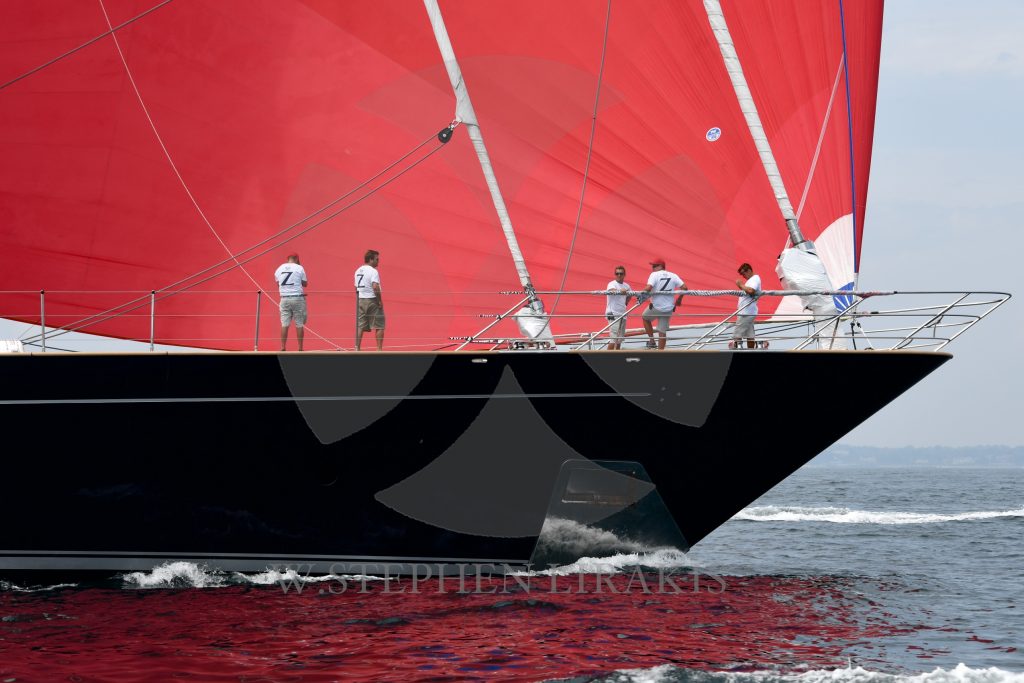
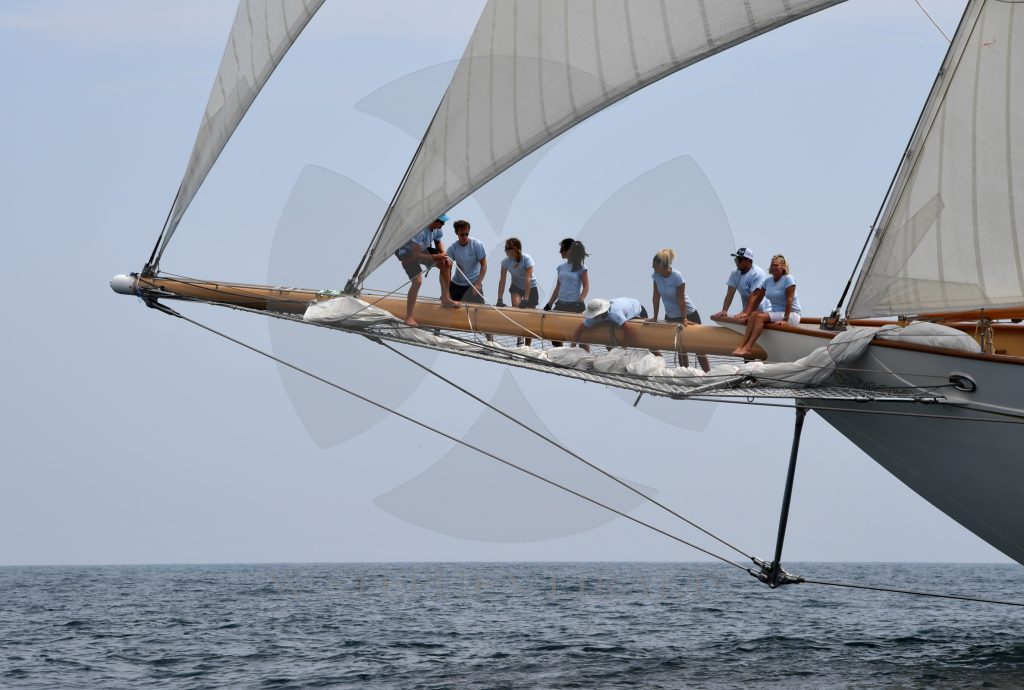
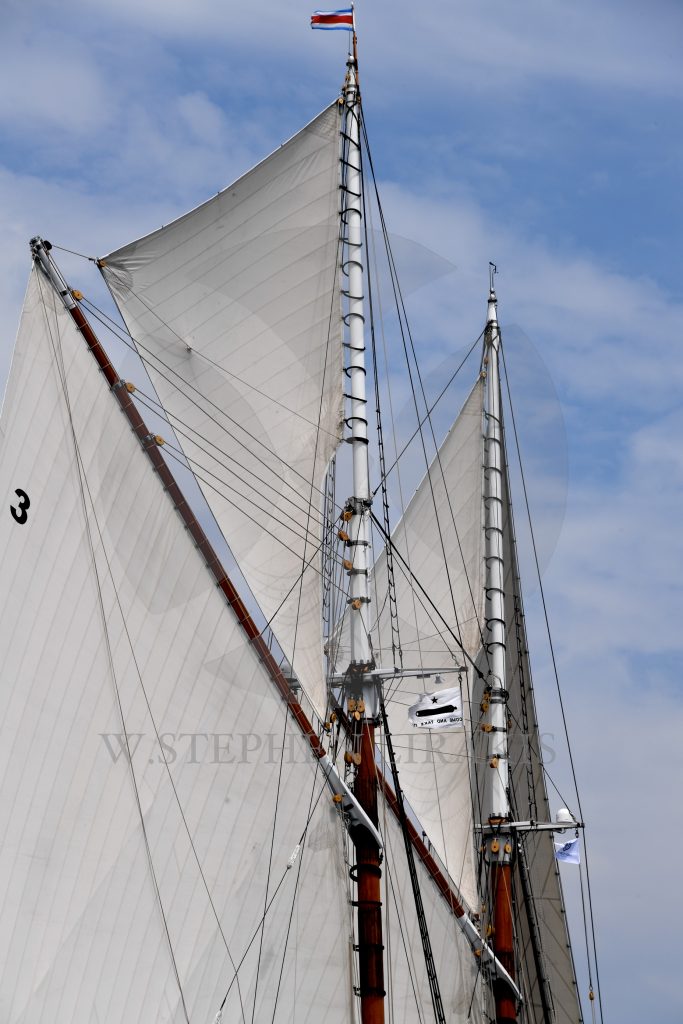
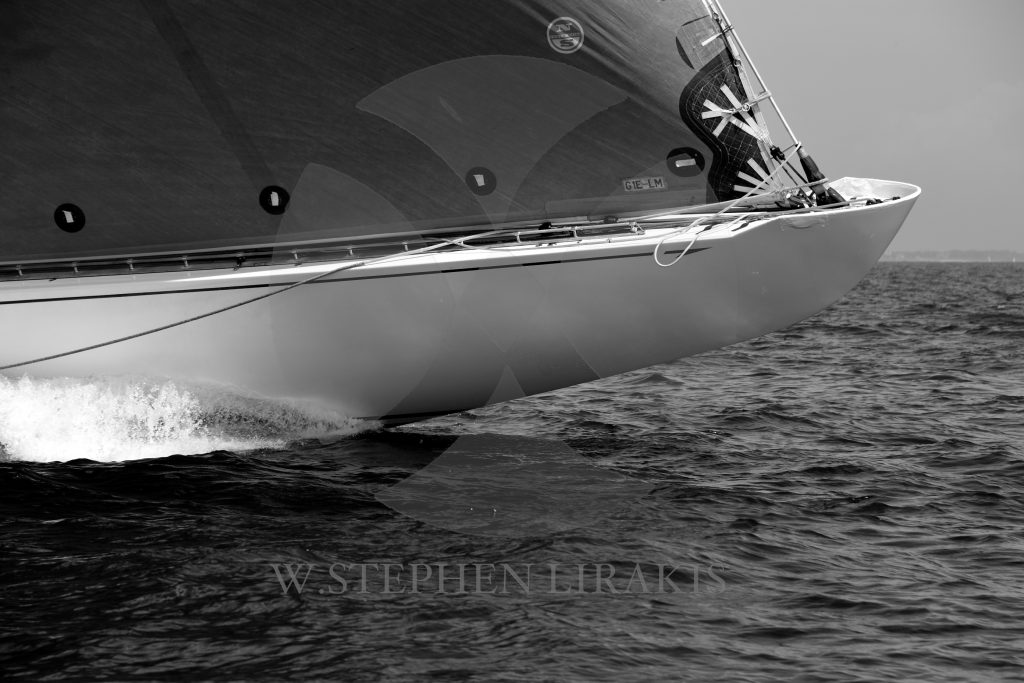
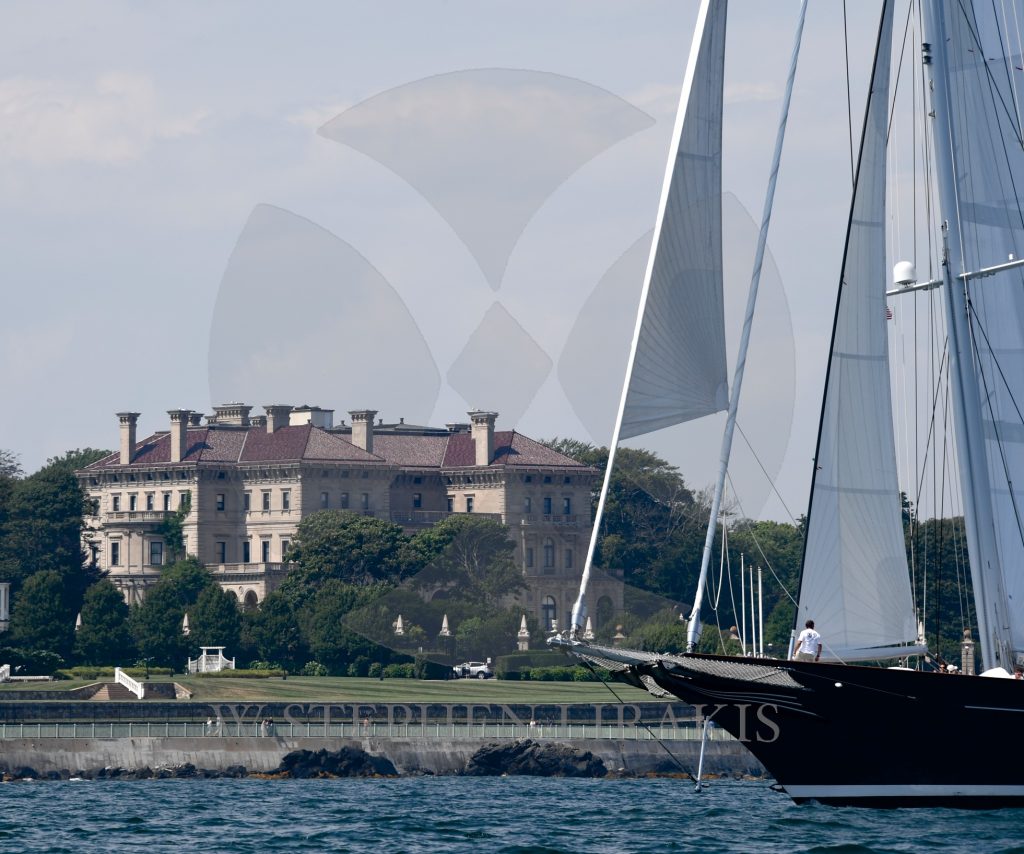
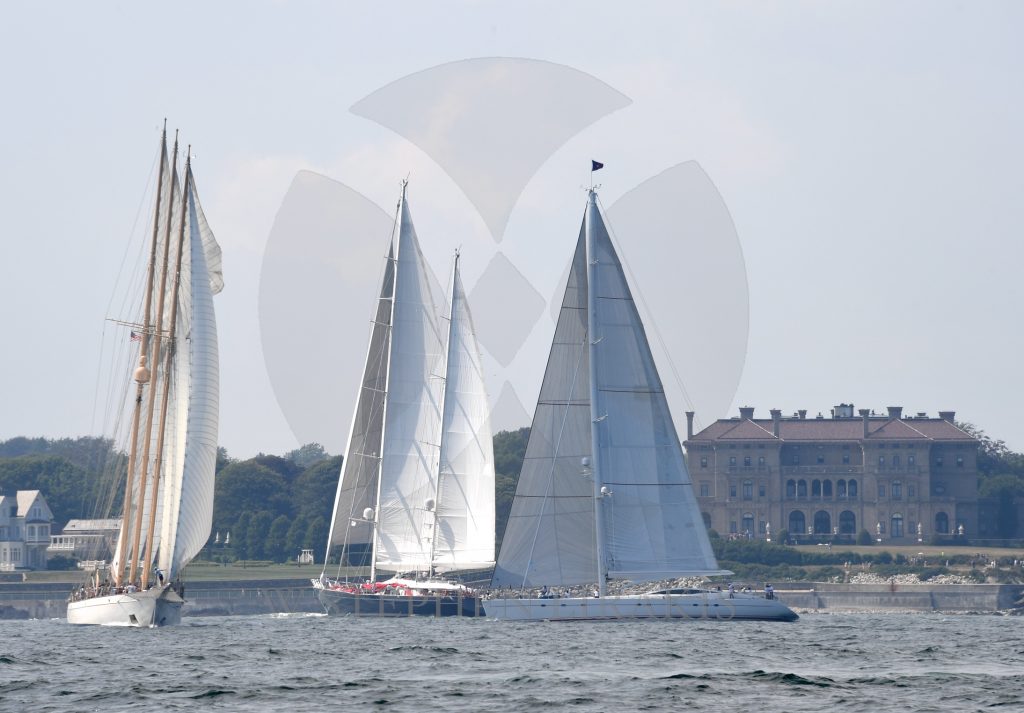
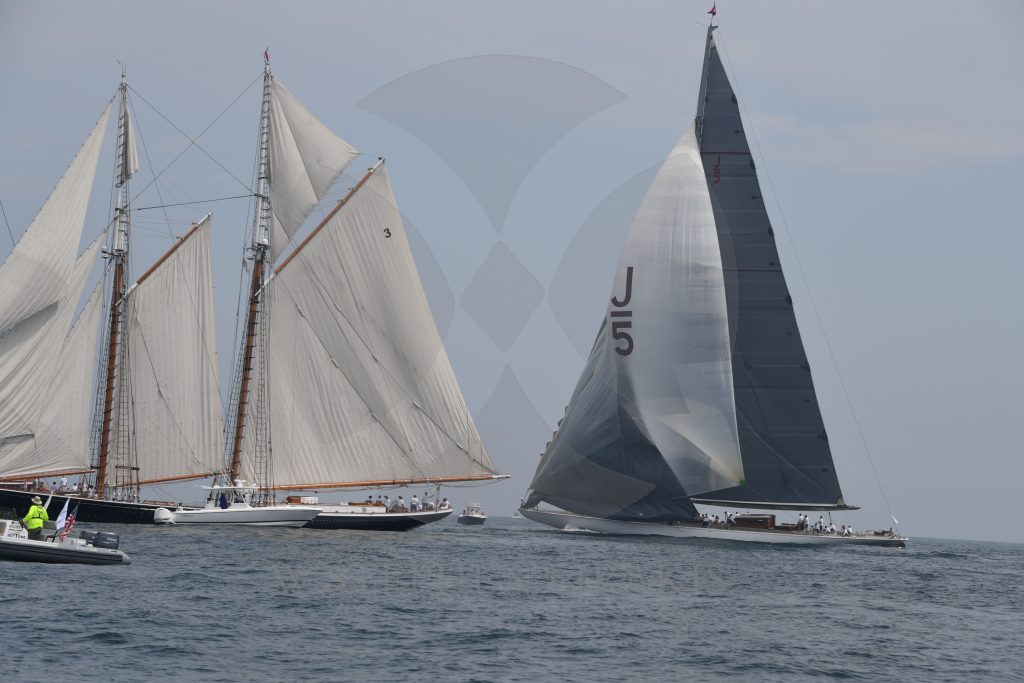







“COMANCHE” CHOPPED OVER A DAY OFF THE TRANSATLANTIC RACORD. GREAT BOAT, GREAT CREW, BUT REMARKABLE ROUTING FROM STAN HONEY
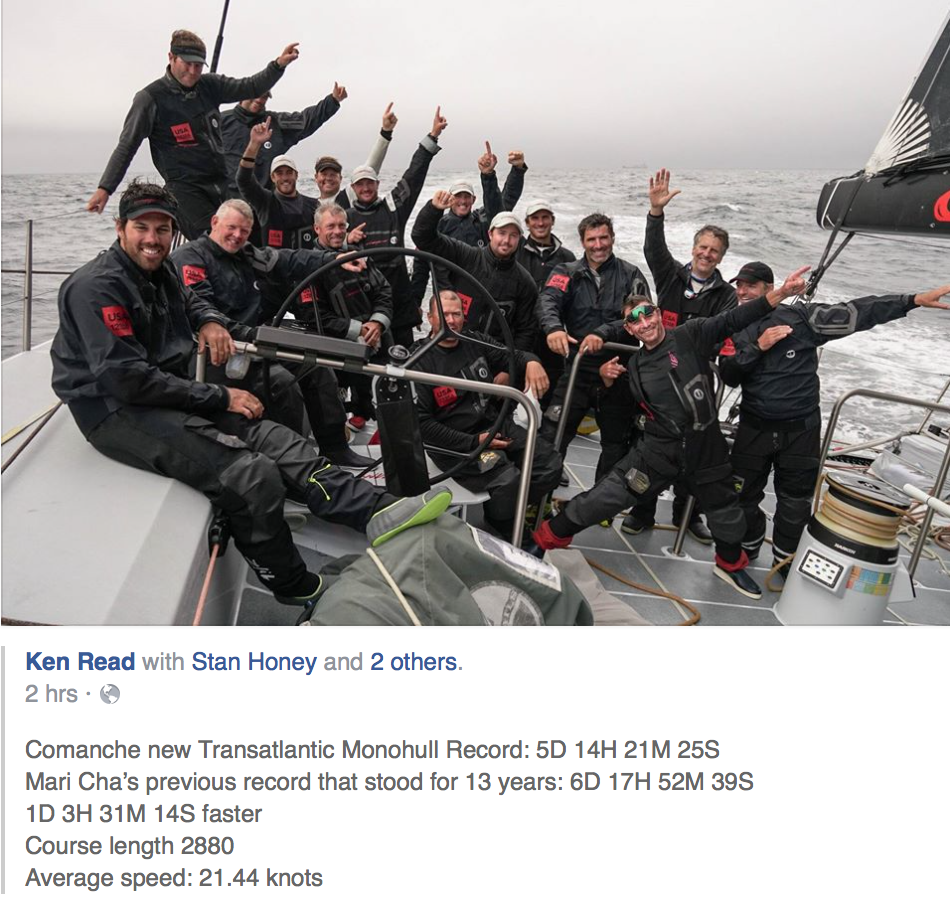
Published on July 22nd, 2016
(July 22, 2016) – Comanche, the 100 foot racing yacht owned by Jim Clark and Kristy Hinze-Clark, will depart this evening from New York (USA) and point her bow East to Britain as the record-breaking monohull takes on the Atlantic in a bid to continue breaking world records.
An exciting weather window has opened up which promises fast conditions with strong wind, great angles and flat seas all the way to Europe. With Comanche skipper Ken Read committed to TV commentating at the Louis Vuitton America’s Cup World Series in Portsmouth, England, over the weekend, the world class crew will be led by experienced sailors Casey Smith, Tony Mutter, Richard Clarke and Navigator Stan Honey. Due to other commitments, Comanche will also be missing regular crewmen Kelvin Harrap, Warwick Fluery, Jimmy Spithill and Ryan Godfrey.
North Sails President Ken Read, speaking from the America’s Cup event in the UK, said, “A fantastic weather window has opened up for Comanche to take on the Atlantic. We have been on standby for a few weeks now and have almost left on three separate occasions since the end of June, and each time we have had to piece together a different team based on who is available, before the weather fizzled out and shut down those attempts. But now the right conditions have presented themselves.
“On a personal level the timing couldn’t be worse as I am committed to my role as TV commentator for the America’s Cup and am on the wrong side of the Atlantic to jump on the boat with the crew, as are key crewmembers such as Kelvin, Jimmy, Warwick and Ryan. But that is life sometimes. It is very difficult to plan a record attempt, so different from a regatta that is scheduled on a very specific date. But this program, put together by the Clark’s, has always been about their core belief in The Team. Under the guidance of Casey, Stan and a crew boasting some of the best sailors in the world, Comanche is in perfectly good hands and if the weather cooperates, they will do it.”
Speaking ahead of the departure, Comanche owner Jim Clark stated, “Comanche was built to break records – she has already proven her potential in major events all around the world and this looks to be a great opportunity to continue her legacy. It’s a real shame her skipper Ken Read and other key crewmembers will have to miss this ride but he and I will both remain in close contact with the guys onboard. The crew is made of some of the best sailors in the world who all have great pedigree. I have a good feeling about this attempt.”
The highly experienced Navigator on Comanche, Stan Honey, identified the window of opportunity for the crew “The current weather models are giving us ideal conditions to potentially beat the record if everything develops as forecast. Whilst the patterns look perfect for now, with flat seas and a great angle with strong winds to power us across the Atlantic, as ever we are always at the mercy of changing weather, so we’ve got everything crossed. All in all now is the time to go if we are to take on the record this summer.”
The current monohull transatlantic record from West to East (Ambrose Lighthouse to Lizard Point) is 6 days 17 hours 52 minutes and 39 seconds, set by Mari Cha IV in October 2003. In 2015, Comanche set the 24 hour monohull distance record of 618 miles as they raced across the Atlantic (at an average speed of 25.75 knots).
To follow the progress of Comanche, please visit:
The boat will sail with only 17 crew and with all manual powered winches and hydraulics for this record attempt:
Casey Smith (AUS), Boat Captain
Stan Honey (USA), Navigator
Tony Mutter (NZL), Trimmer
Dirk de Ridder (NED), Main Trim
Chris Maxted (AUS), Boat Crew
Jon von Schwarz (USA), Grinder
Juggy Clougher (AUS), Bow
Julien Cressant (FRA), Pit
Nick Dana (USA), Bow
Pablo Arrarte (ESP), Runners
Pepe Ribes (ESP), Bow
Peter van Niekerk (NED), Trimmer
Phil Harmer (AUS), Grinder
Richard Clarke (CAN), Runners
Robert Greenhalgh (GBR), Main Trim
Shannon Falcone (ATG), Grinder
Yann Riou (FRA), Media
FROM SAILING SCUTTLEBUTT
Published on July 20th, 2016
The 2016 inductees to the America’s Cup Hall of Fame will be Mr. Ernesto Bertarelli, two-time winner of the Cup in 2003 and 2007 and runner up in 2010, and the late 4th Earl of Dunraven, Cup challenger in 1893 and 1895.
The America’s Cup Hall of Fame was founded in 1992 as an arm of the Herreshoff Marine Museum (Bristol, RI) by Halsey Herreshoff, a four-time America’s Cup defender and grandson of legendary yacht designer Nathanael G. Herreshoff. Over eighty legends of the Cup have been inducted into the Hall.
Candidates eligible for consideration include members of the crew, designers, builders, syndicate leaders, supporters, chroniclers, and other individuals of merit. Each nominee is judged on the basis of outstanding ability, international recognition, character, performance, and contributions to the sport. The members of the Selection Committee are persons intimate with the history and traditions of America’s Cup and committed to the integrity of the Hall of Fame.
The 2016 America’s Cup Hall of Fame Induction Ceremony will take place in New York City on October 21 at the New York Yacht Club. Previous inductees here.
Ernesto Bertarelli (SUI) b. 1965
As founder, owner, and crewmember of the first Cup boats from Switzerland, all named Alinghi, Bertarelli won the America’s Cup in Auckland, New Zealand in 2003, and defended it successfully in Valencia, Spain in 2007. In 2010 at Valencia, in the first Cup match between two multihulls, Alinghi’s winning streak came to end.
Bertarelli sailed aboard his Cup yachts continuing the Cup tradition of owner-sailors that have included Harold Vanderbilt, T.O.M. Sopwith, and Ted Turner. Bertarelli competed in all the races in the 31st, 32nd, and 33rd America’s Cup matches in several roles, including navigator, afterguard member, backstay trimmer, and, in 2010, as helmsman.
Bertarelli’s vision for the America’s Cup clearly broke boundaries. The first Cup winner from continental Europe, he took the Cup back to Europe and produced the 32nd America’s Cup in Valencia, which was among the most successful events in the competition’s post-war history. That event hosted more challengers than any other, Fremantle excepted.
Bertarelli also organized the first Acts (now called the Louis Vuitton America’s Cup World Series), a series of regattas for the challengers and the defender which toured venues in Europe.
The 33rd Match in 2010, beset by legal challenges, was eventually decided on the water by gigantic multihulls, the fastest Cup yachts ever built up to that time, with the Alinghi team losing the Cup to BMW Oracle Racing.
Alongside his achievements in other highly competitive circuits, Ernesto Bertarelli shows a depth of ability to build talented teams and a remarkable determination to win. He has created a new winning tradition in Swiss sailing and has both inspired and invested in the next generation of his nation’s sailors.
Windham Thomas Wyndham-Quin, 4th Earl of Dunraven and Mount-Earl (GBR) (1841-1926)
Lord Dunraven was an Oxford graduate, cavalry officer, war correspondent, adventurer, big game hunter, politician, racehorse owner and yachtsman. He was also a great lover of the United States and her people, investing in land in Colorado and hunting elk with Buffalo Bill Cody in Nebraska.
A fully qualified yacht captain and helmsman in his own right, he did much to encourage yacht racing and the advance of yacht design. He was also a prolific yacht owner with myriad small racing yachts, Big Class racers, cruisers, and power yachts.
In 1893, Lord Dunraven challenged the Cup’s holder, the New York Yacht Club. During the negotiations over the conditions of the match, Dunraven achieved the concession to drop the Inside Course (a notorious course, riddled with shoals and strong currents, that favored the defender) from the menu of courses used up to that time for the Cup races. From that point on, only the Ocean Course, free from headlands, and largely free of shoals, was used for the races, benefitting all future challengers.
For the match, Dunraven hired the brilliant George L. Watson to design his contender, Valkyrie II. While she was out-sailed by the defending Vigilant, the first Herreshoff Cup defender, the races attracted vast crowds and increased the popularity of the Cup as a sporting spectacle. The last race in the series was one of the most exciting in America’s Cup history, with Vigilant trailing for many miles until finally overtaking Valkyrie II near the finish, winning by just 40 seconds on corrected time—the closest Cup race up to that time.
Having caught “America’s Cup fever”, Dunraven returned in 1895 with the Watson-designed Valkyrie III, a pioneer of the modern challenger, which was better adapted to local racing conditions and more professionally managed than any previous challenger. But the race series descended into acrimony by misunderstandings and disagreements between the competitors.
The spectator fleet had grown to unmanageable proportions and was perceived as a major problem by the challenger. A minor collision in the second race for which Valkyrie III was found to be at fault led Dunraven to withdraw from the series. Thereafter he made increasingly intemperate accusations, and yacht racing made headlines for all the wrong reasons.
Dunraven was one of the leading yachtsmen of the late nineteenth and early twentieth centuries. His two campaigns for the Cup raised the level of Cup racing and were directly responsible for ushering in the Cup’s classic golden age from Sir Thomas Lipton’s challenges to those of T.O.M. Sopwith.
Source: Herreshoff Marine Museum
THESE PLANTS HAVE A POWERFUL EFFECT ON PEOPLE. THEY STOP TO PONDER, MARVEL, PHOTOGRAPH OR PAINT THESE LOTUS FLOWERS. IT IS NOW MID-SUMMER, BUT EVEN AS THE FLOWERS DIES THE METAMORPHOSIS IS CAPTIVATING.


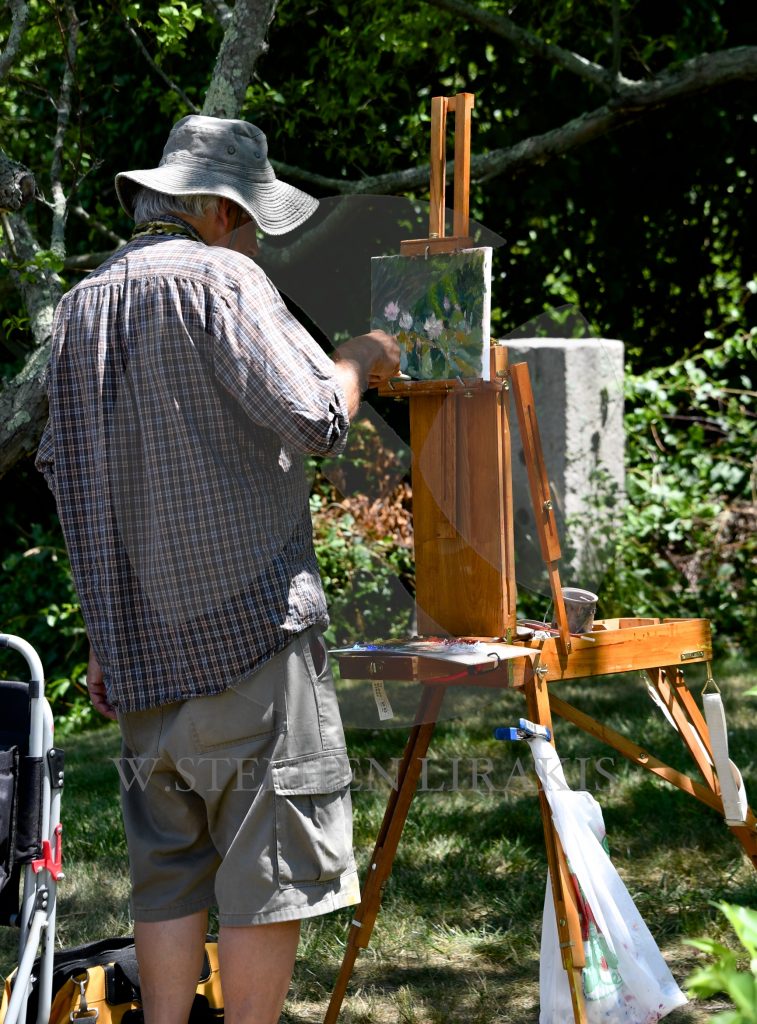
The Newport of my youth was a working waterfront. fishing boats, commercial boats and yachts co-existing side by side in the same water and the same docks.
Today, the is not a shred of evidence of this life.